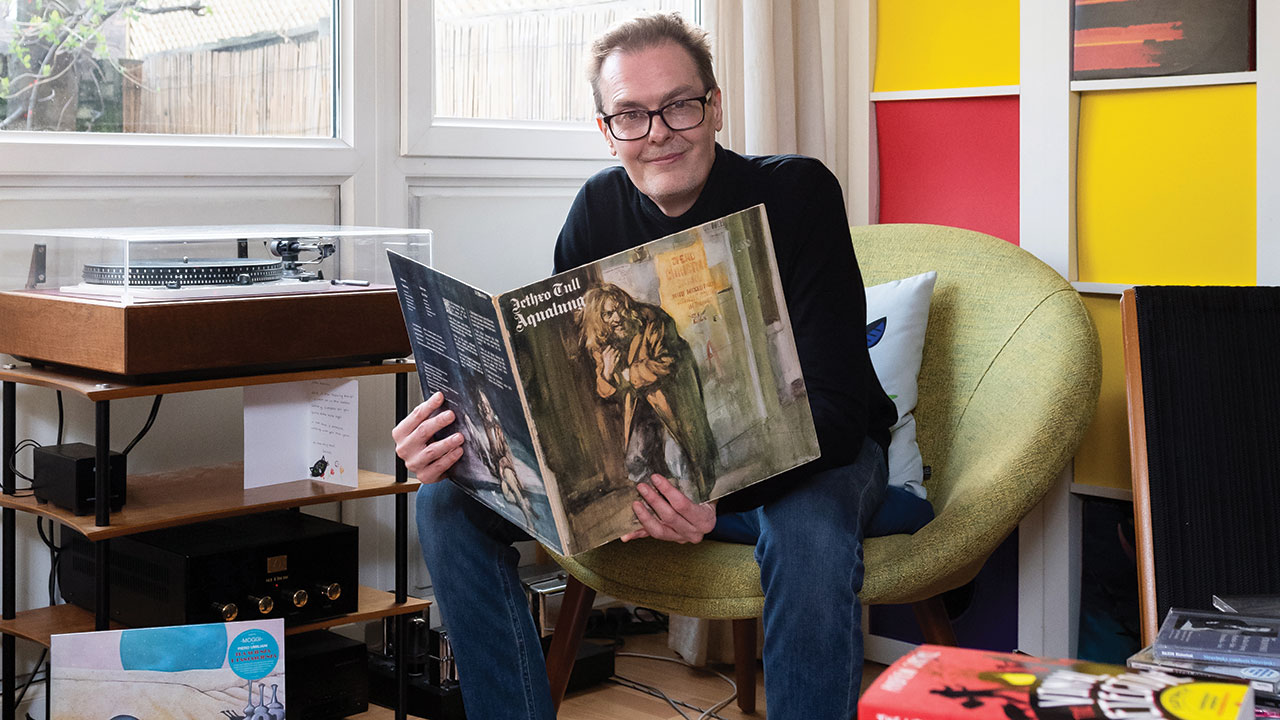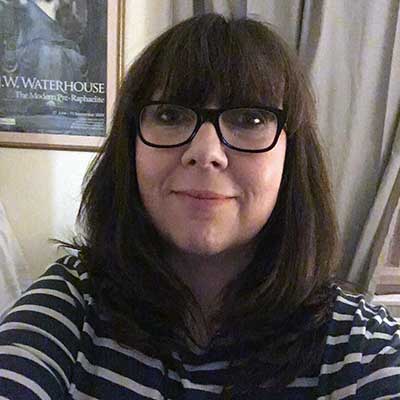I was born in London, then I was raised in Canada. I absorbed music mostly from my older brother and sister, and from whatever was on the telly and radio. Jazz was the first thing I listened to because the first piece of music where I took an interest in the composer was after hearing the theme to Mission Impossible, by Lalo Schifrin. The next piece of music was the soundtrack to the original Casino Royale by Burt Bacharach. His stuff is easy to like, so it sounds like simple pop music, but it’s very rich. It’s music with real integrity and depth.
Through my siblings I got into Jethro Tull. What’s wonderful about Aqualung is to be able to put it on all these decades later and still get the same emotional hit from it. Two things stood out with Tull and one was crazy cover art. Next, it was the sound of Ian Anderson’s flute. I now know that it echoes the sound of, say, Roland Kirk, but at the time it was amazing and something quite unique to me. It was so beautifully used. Aqualung is also really strong lyrically and musically – it’s challenging, constantly changing and uses all sorts of wonderful sonic tricks.
As a nipper I also listened to Pink Floyd’s Saucerful Of Secrets, again being drawn to the artwork which featured [comic book character] Doctor Strange. It’s like the soundtrack to a sci-fi movie – so that was appealing – but years later when I was finding music on my own, I really liked The Dark Side Of The Moon. When I was writing my second The Vinyl Detective novel [The Run-out Groove], it was about a prog rock woman, a leader of a band who’s a female Syd Barrett. That involved a plunge into Floyd all over again.
Branching out to assemble my own collection I bought Tarkus by ELP. It was cheap, and I liked the cover, the armadillo tank. Similarly, I bought Savoy Brown’s Hellbound Train for the cover art. The art was a big draw for me with ELP; I also have Brain Salad Surgery because of HR Giger’s great sleeve.
Just before we came back to the UK in the 70s, my brother was listening to Pretzel Logic and Can’t Buy A Thrill by Steely Dan, so I got into them. We moved to Dover, and the first Steely Dan album I bought was The Royal Scam. This is the ultimate Steely Dan album for me; Larry Carlton’s guitar playing on that is amazing, Haitian Divorce is an incredible track. Like Aqualung it’s a record I can put on and enjoy every note the way I used to, possibly because of the density, complexity and musical richness. Walter Becker and Donald Fagen were also admirers of Burt Bacharach, which speaks volumes for me.
I got to university and found Haitian Divorce was on the jukebox – a good sign. There was still some prog around me; I was flat-sharing with an Eno nut. He had Another Green World, Music For Films and all the other ambient stuff. I listened to a lot of those sitting in a fog of marijuana smoke in a council flat off the Mile End Road. I also loved John Martyn then; there’s something of that jazzy complexity to Solid Air, and it stands the test of time.
Frank Zappa came along when I was writing for Hi-Fi News. There’s a lot of Zappa music out there, and all of it’s of interest, but Hot Rats stuck with me. I haven’t got a copy right now – being a record snob I’ve been looking for an early pressing from the country of origin! The idea is to get the one that’s closest to what they sounded like in the studio when they were playing live.
I love Italian soundtracks. Morricone is the name that people know but there are others who’re almost of the same stature. Piero Piccioni did an album called Colpo Rovente [Red Hot Shot], and it’s got a wild, proggy sound. Then there’s Piero Umiliani. He’s like Piccioni, a great jazz man who moved into soundtracks. Umiliani created his own music library and made a huge amount of music – you’ll know him from Mah Nà Mah Nà, covered by The Muppets. The score to 5 Bambole Per La Luna D’agosto [Five Dolls For An August Moon] has a great deal of progginess to it, including a sitar, and one of the library albums is by Moggi, his pseudonym. That’s just a thunderous menacing synth record! I hope people check these out, they are both movies from the giallo [Italian thriller] scene.
I found Beaver & Krause’s In A Wild Sanctuary a long time ago in a record shop in Luxembourg. I was drawn by the Escher art, and I read the line-up on the back and found it was a bunch of jazz people who I love, such as Milt Holland on percussion and Dave Grusin on keys. Those guys are really fascinating; Bernard Krause likes to record natural soundscapes and get into environments before people destroy them. Learning more about his writing and teachings added another dimension to enjoying the record.
I discovered Joni Mitchell in England, via Blue. Her work has an enduring complexity that you’ll never get tired of. In the albums after Blue she moved into an experimental and jazzy direction – The Hissing Of Summer Lawns is almost jazz-prog. A phenomenal singer and a superb crafter of lyrics.
I heard Raspberry Beret, Little Red Corvette and Nothing Compares 2 U and I was drawn in. I listened to a lot of Prince for a while. To me, Prince was progressive because there’s no limit to what he would’ve considered for instrumentation and there’s a complexity driving his compositions, even when they sound simple. Like Zappa, he could play fabulous guitar but they’re not guitarists per se, but composers, arrangers and producers. His genius overlapped with the pop charts, though, and landed in the mainstream.
I was still at grammar school when Wuthering Heights came out. I loved Kate Bush; she was beguiling, seductive and incredibly sweet as well. On top of that, she’s a very interesting songwriter and dark stuff came from her. I think it’s wild when cover art has many variants – like the Spanish version of the Rolling Stones’ Sticky Fingers that has some chopped up fingers in a tin of treacle. That’s because the image of the group in jeans was banned in Franco’s Spain. There was uncertainty over how to market Kate in North America. One cover of The Kick Inside has her sitting in jeans and a striped shirt looking like it might be a country album. Then there’s the one I have, [the head shot portrait] from Canada, which might be better than the original…
When I was creating The Vinyl Detective stories my friend [and best-selling novelist] Ben Aaronovitch told me, ‘Write about what you really love.’ What I really love is digging around in crates, buying records and playing them on a really nice system. I needed some commercial appeal and I like crime fiction, so the detective idea arose naturally. Using my own record collection for inspiration, each book focuses on a different genre of music: jazz, psychedelic progressive rock, swing music, electric folk… and I’ve just finished one on punk. Now I’m working out what genre to do next…”
This article originally appeared in Prog 108.

